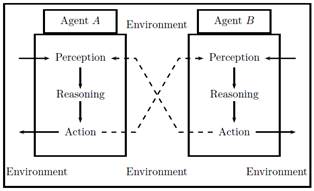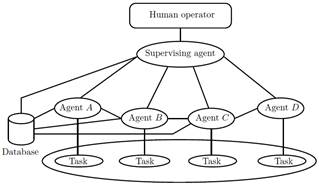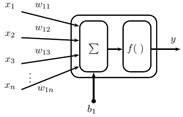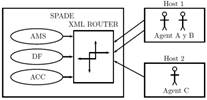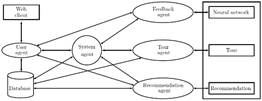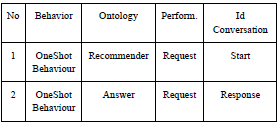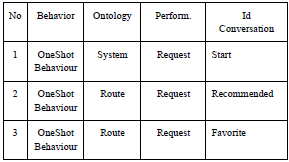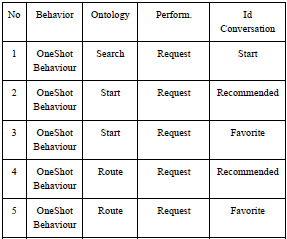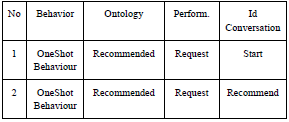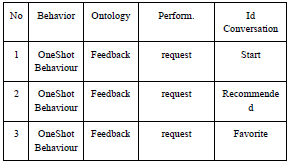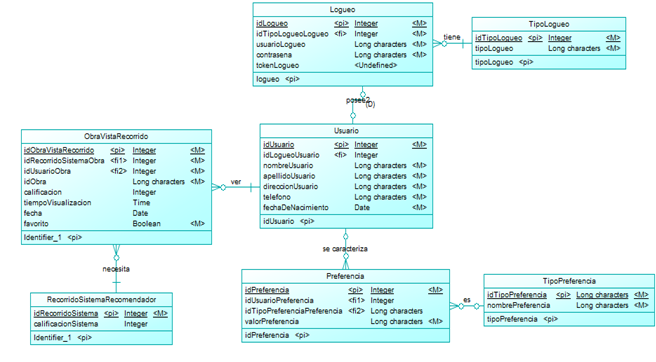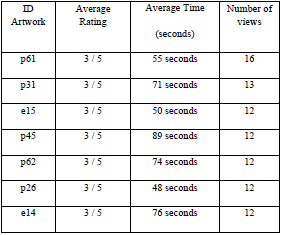1. Introduction
The implementation of recommender systems has become an alternative to analyze people data which may be considered as ‘’filtering technology’’ that permits the creation of predictions about user preferences, such preferences may be given books, movies, and songs, among others.
Considering applications focused on museum collections, [2] describes the importance of recommender systems because of the large amount of information displayed to the user when visiting a museum. Meanwhile, multiagent systems can be considered as the union of various intelligent entities coordinating actions and interacting in a specific environment trying to fulfill defined objectives to find an answer [3].
Regarding the multiagent system development, various papers focusing on the analysis of large amounts of information can be examined; one of those has to do with an integrating system of digital libraries [4] in which a multiagent system searches documents from a virtual library allowing the user a fast and effective inquire about books. Using a personality test, [5] presents a related work proposing a multiagent system that allows the analysis of user preferences while using the social network Twitter. Such works display multiagent use in different fields of science to accelerate the flow of information when establishing an answer is required.
In additional works as in [6], a multiagent system is described solving a problem a cooperative control where an unknown non-linear dynamic with external disturbances is present. Likewise, [7] describes a multiagent system applied to advanced manufacturing of electronic components providing an integrated, flexible, intelligent, and of management in the workshop. On the other hand, [8] presents a multiagent combination system for evolutionary and data mining algorithms to improve the search process and optimization issues in the real world.
A hybridization-based focus is proposed by authors including different metaheuristics synergistically acting in the establishment of auto-adaptive parameters together with the introduction of rules obtained from both knowledges about the problem and derivations of knowledge, starting from explored solutions in former generations. Another work [9] shows the development of an intelligent control system and file management focused on the oil industry. In addition, [10] describes a book recommender system based on user habits where issues regarding proper books for an investigator arise, also issues related to data volume, feedback, and computing capacity in real-time data processing.
On the other hand, [11] proposes an agent-based recommender system aiming to assist students to overcome deficiencies by suggesting relevant learning resources. Authors design a cooperative system based on autonomous agents that can improve and update the result of the recommendation on behalf of previous experiences in the learning platform.
This work explains the implementation of a multiagent recommender system which is developed using the SPADE platform (Smart Python Multi-Agent Development Environment) using neural networks that allow the analysis of user artworks tours. This information permits the verification of both the scores and the lapse of time spent by the user in artwork when giving the tour a score. Moreover, the information collected allows determining if the user likes or dislikes the tour. For management information, dataset and the database described in [12] are used. The information dataset grants to obtain artworks and sculptures in storage; meanwhile, the database is useful to administer user information as well as user preferences in a tour while an augmented reality application was used for displaying the system which allowed the possibility of joint work with the recommender system [13]. The joint project called MuseAr implemented three components; this application was developed for Android devices whose camera grants the user point towards a code image to visualize the virtual museum. The system also allows the configuration preferences and to give scores to artworks.
This document shows the prototype development, creating intelligent agents, neural networks, and a server of development with the use of external applications like the user information database, and the visualization used as elements that contributed to the project development.
2. Recommendation Systems
A recommender system is a technology for personalized information processing that allows making user predictions on a specific item [1]. From a practical perspective, a recommender system is a set of mechanisms and techniques aimed to recover information and to determine a solution in a problem of recommendation. Such systems assist users in choosing objects on use or interest [14].
The differentiation of recommendation systems is based on the following aspects:
Objective: according to the user profiles, the recommendation system suppresses non-relevant information.
Frequency of use: Recommendation systems are focused for long and extended usage.
Representation of needs: For user profile information analysis, these are expressed in question form.
Social environment: The relation with the user is relevant for the analysis of tastes and preferences of the user. In order for accomplishing a suitable recommendation the following techniques are used:
3. Intelligent Agent and Multiagent
According to [15] and [16], an intelligent agent is an entity capable of perceiving its environment with the use of sensors allowing it to act in such an environment. From an ideal perspective, a rational agent must maximize the action performed using the information of the sensors and the available knowledge [15]. Figure 1 displays the way a multiagent operates, each step shows the perception, decision making and action, as well as the interaction among agents with the environment [16].
A multiagent system consists of a collection of several intelligent agents, each one aiming to accomplish the objectives while acting in an environment having the possibility to communicate and coordinate actions; thus, the interaction and behavior grant the solution of a problem [17]. According to [18], figure 2 shows an example of a multiagent system where the interactions are visible together with a database and a supervisor agent.
According to [19], artificial neural networks include processing information elements whose local interactions permit a global behavior of the system.
4. Neural Networks
These can be considered as a massively parallel distributed processing system that permits the storage of empirical knowledge for later usage [20].
Figure 3 shows an artificial neuron consisting of entries, weights, and an output given by an activation function [21]. Each entry is assigned a weight, and then the products are added for passing to an activation function. A neural network consists of the interconnection of several neurons to reach higher adaptability; thus, pattern acknowledgment is enhanced as well as the tolerance in cases of failures of a neuron in the network [22].
One type of classification of neural networks is given by the number of layers: monolayer and multilayer [24]. Figure 4 displays an example of a multilayer neural network. Also, depending on the flow of information they can be classified as Feed Forward o Back Forward. In the first case the signals move forward and in the second, which corresponds to self-recurrent networks, connections can move backward.
5. Spade Development Platform
The free platform Smart Python Multi-agent Development Environment (SPADE) was used to implementing the multiagent recommendation system which was developed in 2005 at the Polytechnical University of Valencia, based on the instant messaging technology XMPP (Extensible Messaging and Presence Protocol) which was also developed using the Python programing language.
SPADE platform was developed for testing the instant messaging technology as a transport protocol for intelligent agents. It also integrates the flexibility characteristics of the instant messaging protocol XML (Extensible Markup Language).
According to [25], SPADE is based on a set of standards from which FIPA (Foundation for Intelligent Physical Agents) and XMPP (Extensible Messaging and Presence Protocol) are the most remarkable. The SPADE model platform is shown in Figure 5.
The main characteristics of the SPADE platform are:
Standard for FIPA support through the XMPP instant messaging protocol (start instant) and DF (End process) included.
Notification of presence among agents.
Virtual arrays based on multiconference protocol MUC (Multi-user chat).
Communication P2P between agents.
Services remote invocation among agents using the standard XML-RPC (Invocation procedure protocol).
Language content processors.
BDI model agent based on Knowledge, Wishes and Intentions.
Models of behavior: Cyclic, recurring, execution timeout, machine of finite states and based on events.
Communication support with other platforms by diverse transport protocols: JADE (Java Agent Development Framework) and SIMBA (An approach for real-time multi-agent systems).
Web based graphic interface.
6. Development of the System
The creation of a multiagent system containing 5 intelligent agents was proposed to develop the system (prototype), each one with a unique characteristic in the creation of a recommended tour. The development included the use of artworks and sculptures as basic information for user visualization, that is, two elements are used to allow users to observe and grade during the first visit in the museum. There are preferences for users when in tours, where a set of parameters is configurated to recreate initial tours and allowing to identify the tastes and preferences of a user.
6.1 User preferences
The purpose of developing the prototype to recommend memories is the creation of recommended tours for those users willing to see artworks and sculptures.
During the development, user preferences were determined to aim the obtention user information, recreating initial conditions of works that may draw user attention.
It is relevant to point that inside the database application there are two types of works: paintings and sculptures which are associated to a historical movement and to a technique for the work creation.
It is relevant to point that inside the database application there are two types of works: paintings and sculptures which are associated to a historical movement and to a technique for the work creation.
It is relevant to point that inside the database application there are two types of works: paintings and sculptures which are associated to a historical movement and to a technique for the work creation.
Frequency of visits to the museum: This grader item between 1 (minor) and 5 (highest) allows to recognize the number of visits made by a user to the museum.
Painting movement: This allows the user the selection of a historical movement of the paintings contained in the multimedia database.
Painting technique: This item allows the user the selection of a painting technique that is contained in the multimedia database.
Sculpture movement: The user can select a historical movement of the sculptures contained in the multimedia database.
Sculpture technique: This item allows the user to select the sculpture technique contained in the multimedia database.
As a measure for an initial approximation between a user and a prototype, those preferences were designed to permit adjustments in the first tour also allowing a manual creation with the adjustments obtained from the configuration preferences. Once the user completed the first tour the system is capable to determine his or her preferences, providing a suitable selection of artworks and sculptures in the following iteration; the name of this tour is named recommended tour.
On the other hand, another tour that can be made is based on the favorites system; this is rooted in the information given by the user when giving a “like” to an artwork where a personalized tour is created with the selected type of artworks previously selected by the user. Inside the tour, when observing an artwork, the user can grade from 1 for minor up to 5 stars to the higher grade, which by the way indicates user favorites; this is also a form to obtaining information.
The generated data came from the user finalization of the tour is later analyzed which grants the system the elaboration of feedback with the consequent valuation on user tastes.
6.2 Design of the multiagent system
There are a variety of elements to consider when creating intelligent agents like the manifest behavior, the objective and the exit that imply the satisfaction of accomplishing the purpose by which each one has been created.
Intelligent agents developed for the recommender system prototype are typified for having specific characteristics as their identifier. Agents have a user name and a server domain which permit the connection with the communications platform through the SPADE server; this process allows adding agents to the server thus providing an open communication flow with any available agent in the system.
SPADE sever has an internal component for the dispatcher of messages that permits the flow of communication among agents by receiving and sending messages using the library of the agent.
Each agent has a specific behavior to accomplish a function inside the prototype. In this specific case, the five agents have a “One-Shot” behavior, which is defined to perform tasks that are executed one time once the dispatcher indicates the execution must take place.
An improvement of the architecture was made in the system multiagent development stage respect from the previous one [26], whose design can be seen in figure 6, aiming to cover the recommendation process for a user.
Thus, this system is created to allow the selection of the different agents in the prototype. This structure displays the agent of the system, the verification officer, the feedback agent (which is responsible for analyzing user grades to prove if the user liked the tour), the recommendation and the search agent.
The purpose of the search agent consists of a search of accurate information to accomplish the goal of the search. This multiagent system was created to provide another way to fulfill recommended tours to users.
The user-agent is in charge of entering the system to ask for a user recommendation. In the SPADE platform the intelligent agent is named “id” (identifier) plus the “IP” address of the working machine, in this case, is usuario1@127.0.0.1.
These data permit both to know the user and the name of the agent to provide a recommendation. After giving the recommendation the user-agent obtains a file with a “json” extension that shows the exit determined by the system.
Table 1 shows the configuration of the intelligent agent inside SPADE. This case allows observing the behavior of the agent, the ontology, the performativity, and the id of the chat to communicate with the other agents.
The system-agent is in charge of coordinating all the agents connected to SPADE, it also manages the references of all the agents in the system besides the communication and the proper functioning when a recommendation is generated. Table 2 shows the configuration of action and execution of the intelligent agent.
The tour agent is responsible for linking the results obtained by the feedback and recommendation agents when a tour is recommended to a user. By using the query module, the information related to the generated data for the user tour is managed; this agent is in charge of creating the favorite tour using a query for subsequent storage. Table 3 contains the information of the tour agent.
The recommender agent generates the required information to link and deliver the recommended tour to a user; the process finishes delivering a “json” format file recommendation. Table 4 displays the agent information.
The feedback agent is in charge of analyzing the information of a given tour by a user; this is a learning agent consisting of a self-learning module formed by the neural network.
When the grades interact with the artworks and as time of visualization with the feedback data passes, the learning process is improved.
This agent analyses the grades given by the user scoring from 1 for the lowest and 5 for the highest grade. The results and lapse of time spent in the artwork are analyzed to check the progress of the recommendation, managing corrections, and reparations to improve new recommended tours. Table 5 shows the information of communication of the intelligent agent.
For the development of the intelligent feedback agent, it is considered the analysis of [26] to create the neural network, the structural design of the network can be seen in figure 7, where the neural network is composed of three layers, with two inputs and an output.
6.3 Database application
For a suitable recommender system functioning a storage is required that allows the transaction of requests in a given time. The database presented in [12] has been implemented to develop this project allowing the receiving of requests “get” type, which provides the required information of users and artworks to manage a recommendation.
Figure 8 shows a structure of a type SQL database with 6 tables. The table Work View Tour contains information of both the user and the artwork. It also has 2 fundamental columns to create a new recommended tour. Those values are the ones utilized inside the feedback agent and are primordial to creating a new recommended tour.
7. Artworks and Preferences Visualization
Preferences are one of the entries of the system. Figure 9 shows the configuration display of the visualization application developed in [13] where the user saves the changes in the tour preferences, those can be the number of artworks to observe, the valuation of visits to the museum or the type of accuracy of the recommender system.

Figure 9 Preferences configuration display [13].In [26] the analysis of the functioning of the neural network is shown, as well as the configuration.
Furthermore, the system grants the type of artistic movement, painting or sculpture technique that can be observed in a tour.
Figure 10 shows the value that a user may give a to a paint; such value goes from 1 to 5 points, in cases when the artwork is labeled as “favorite” the user can click “Like”.
8. System Results
Considering 35 user, tests take place with the application to observe the acceptance in the system with 129 tours made by the recommender system including 500 artworks observed.
The neural network analyzed the grades and the time spent by the users, the gathered data served to verify the effectiveness of the recommender.
Table 6 shows the average grade and time of visualization of the seven most visited artworks in the prototype. In “Word Id” the p or e indicative is observable before the number, this means that p stands for paint and e stands for sculpture.
Table 7 shows the calculations of the artworks displayed using the application. Here the average grade scores 3.6 out of 5.0, evaluating the suitable performance of the recommender system as most of the artwork tours have scored 3.0 and 4.0 with time lapses of 36 and 80 seconds. These valuations allow observing that the prototype development has granted the users the observation of artworks at will, giving positive grades to the tours managed by the recommender system, underlining its reply capability and generating new tours.
9. Conclusions
From the analyses obtained using the Dataset, a recommender system was created based on multiagents that allow the generation of tours with recommendations of artworks and sculptures
Those recommendations are based on grades of users of the ‘’MuseAr’’ platform. Using data analysis, the intelligent agents interact to obtain a response to a request from a user during a tour. The average artwork grade is 3.6/5.0, thus showing the acceptable performance in the recommender system.
The visualization time of the elements in the museum averages 55 seconds per artwork, a time of 10 minutes per museum tour, which is a suitable time in the virtual museum.
This work allowed to observe the importance of managing large amounts of data; therefore, the communication with the database was a relevant point when managing requests with the server.
When having a type “get” request to the application of the database with a response and a “json” type file, the information management from the recommendation system was simple as existing a predetermined structure, requiring only the multiagent server to use the required information to generate a new recommended tour.
Using a multiagent system through the SPADE platform allowed the analysis of necessary requirements to create this system, where the use of intelligent agents helped to verify how the communications among agents can be made using the communication protocol XMPP, besides using a neural network to analyze the results by the recommender system.
The development of an initial prototype permitted to know the advantages and difficulties to create an intelligent system, allowing the improvement of interactions with users with the information provided by the system, together with the use two different types of artworks like paints and sculptures.













